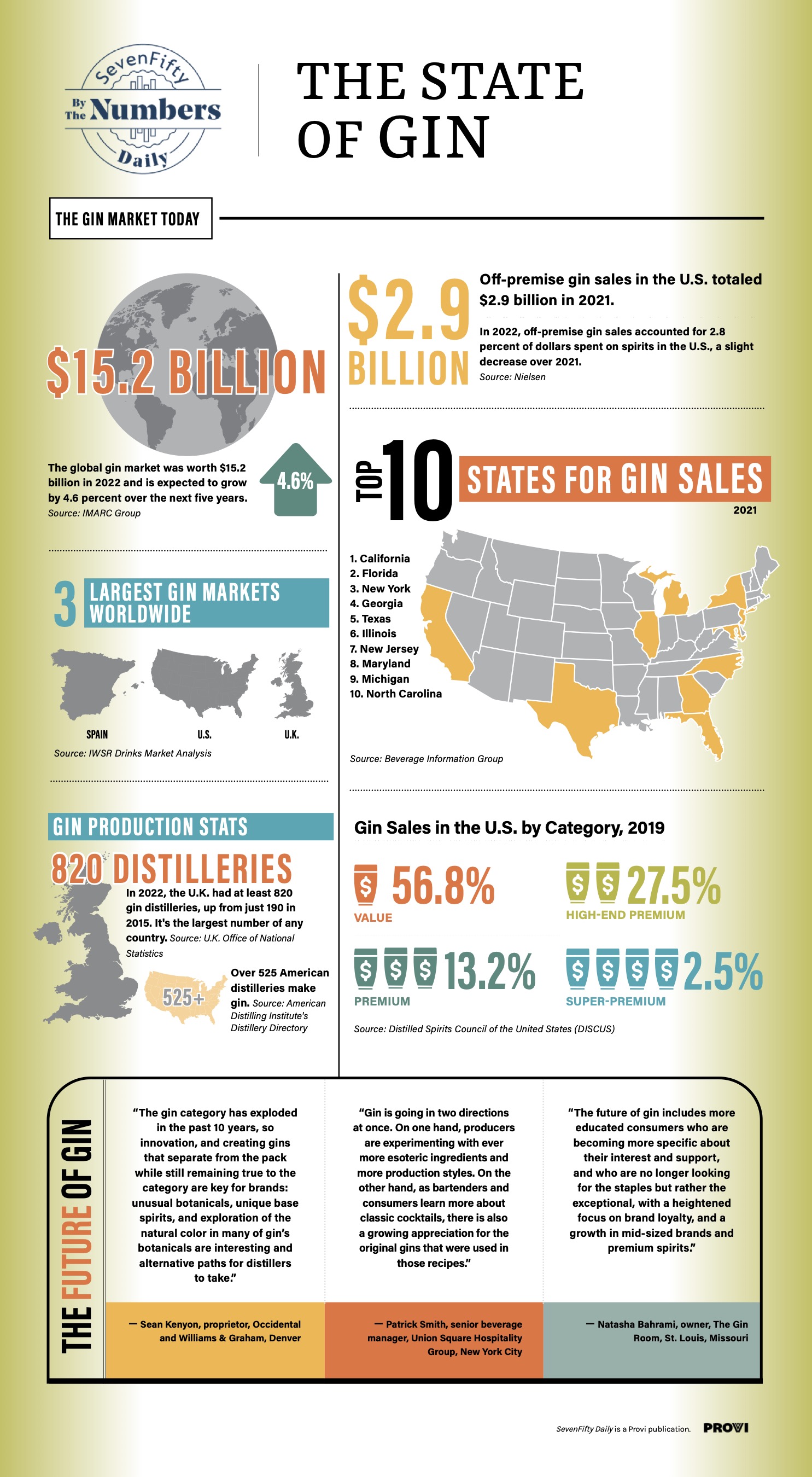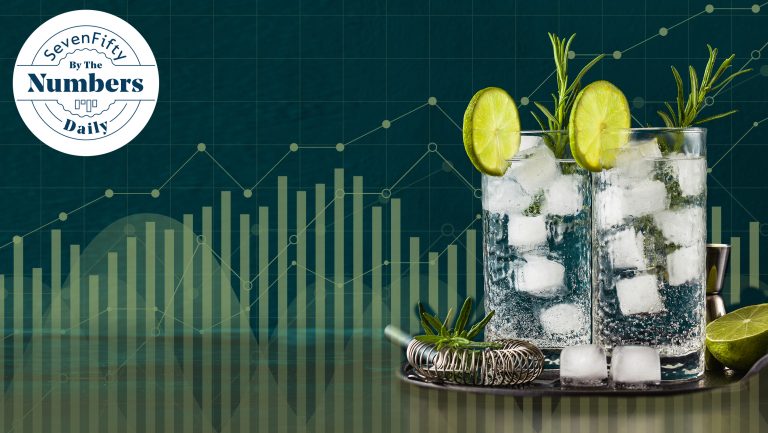Gin reached peak popularity in the U.S. during the Martini heyday of the 1970s, when the clear spirit was considered a go-to for classic cocktail drinkers. But in the decades since, vodka, tequila, and rum have all surpassed U.S. gin sales, leaving some to wonder—what’s ahead for the gin market?
Despite this lagging growth, there are signs of optimism for the gin category. The global gin market was estimated to be worth $15.2 billion in 2022, with a projected growth of almost five percent over the next several years. And classic gin drinks such as the Martini, Negroni, and French 75 are experiencing a renaissance among consumers and bartenders alike.
“The great thing about gin, whether you are distilling or drinking it, is that it allows you to express your creativity,” says Geraldine Kavanaugh, the full-time forager for Ireland’s Glendalough Distillery. “It is a category that can adapt easily to trends and consumer desires, as the rules for making gin are not as restrictive as making whiskey or wine, for example.”

Don’t miss the latest drinks industry news and insights. Sign up for our award-winning newsletters and get insider intel, resources, and trends delivered to your inbox every week.
Beyond the necessary juniper, gin is effectively a blank slate for makers, and other botanical inclusions in the category have expanded well beyond the usual suspects of coriander, angelica root, and citrus peel of late. Terroir-based gins from around the world have exploded the premium gin category in recent years, as distillers use local, often wild-foraged botanicals to express a sense of place.
“Gin’s popularity and reach is spreading to all corners of the globe,” says Emma Stokes, also known as Gin Monkey, a London-based gin educator, the chief of World Gin Day, and the author of The Periodic Table of Cocktails. “This global interest is spurring the use of native botanicals, often never seen in gin before, which is leading to a wider breadth of flavor profiles and tasting experiences.”
Some producers are leaning on floral profiles of gin, producing gins that are labeled as rose gin, violet gin, jasmine gin, and more, and others have hopped on the pink gin bandwagon, with their rosy hues coming from the natural color of a number of different botanicals. All in all, what does the state of the gin market look like right now? Learn more in our infographic below.


Dispatch
Sign up for our award-winning newsletter
Don’t miss the latest drinks industry news and insights—delivered to your inbox every week.






